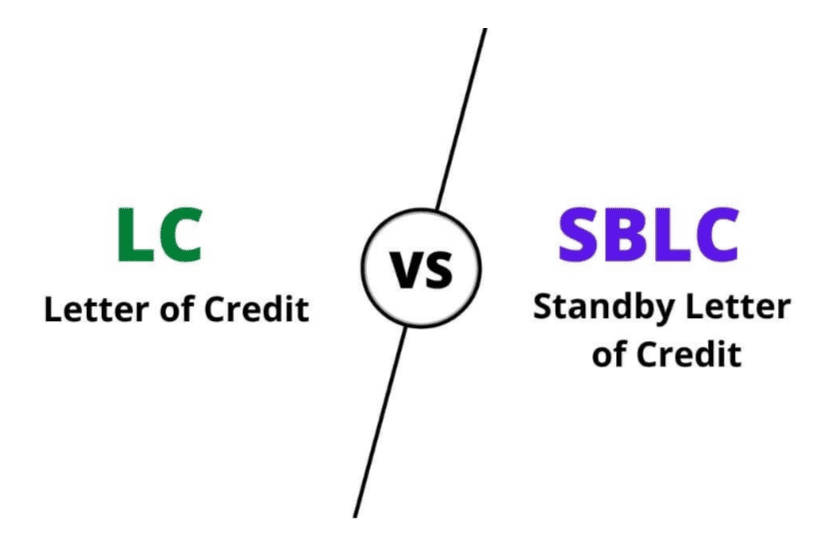- August 13, 2024
- Posted by: admin
- Categories: Channel Financing, Blog

A Letter of Credit (LC) and a Standby Letter of Credit (SBLC) are popular tools used in international trade to ensure that payments are made safely. Both help importers and exporters avoid payment problems and keep money matters stable.
An LC is used as the main way to make payments, making sure the seller gets paid once they fulfill their part of the deal. An SBLC, on the other hand, acts as a safety net and is used if there’s a risk that the buyer might not fulfill their part of the deal.
So, what’s the difference between LC and SBLC? Let’s find out!
What is a Letter of Credit?
A Letter of Credit (LC) is a promise from a bank to pay an exporter (seller) on behalf of an importer (buyer) for the goods or services they order. The bank guarantees that the exporter will get paid on time and in full, as long as they follow the agreed terms and conditions of the deal.
If the importer can’t pay or doesn’t follow the contract rules, the bank will pay the exporter instead. The bank’s role is to ensure the buyer pays on time and both parties stick to the agreement.
What is a Standby Letter of Credit?
A Standby Letter of Credit (SBLC) is a backup plan for payment. The bank promises to pay the exporter (seller) if the importer (buyer) fails to pay. It acts as a guarantee that the seller will get paid if something goes wrong with the buyer’s payment.
The SBLC is only used if the buyer doesn’t pay as promised. If the seller follows all the terms and conditions of the Standby LC agreement, the bank will compensate the seller if the buyer can’t make the payment.
Standby LC vs. Letter of Credit: What’s the Difference?
Both a Letter of Credit (LC) and a Standby Letter of Credit (SBLC) are used to make sure sellers get paid. Here’s a simple way to understand how they are different:
1. What They Do
- Letter of Credit (LC): This is a guarantee from a bank that the seller will get paid on time, as long as they meet the terms of the agreement. It’s like a promise from the bank that the buyer will pay.
- Standby Letter of Credit (SBLC): This acts as a backup plan. The bank will pay the seller only if the buyer fails to pay or doesn’t meet the agreement. It’s used only if something goes wrong with the buyer’s payment.
2. What the Bank Does
- LC: Before issuing an LC, the bank checks the buyer’s financial background to make sure they can pay. The bank might also charge a fee for this service.
- SBLC: The bank usually asks for some form of security or collateral before issuing an SBLC because it guarantees payment if the buyer fails to pay.
3. How They Are Used
- LC: It is used as the main way to make payments in transactions. It’s the primary method for paying for goods or services.
- SBLC: It is used as a backup. It only comes into play if the buyer doesn’t pay as agreed.
4. What They Aim to Achieve
- LC: The goal is to make sure the payment is made according to the agreement. It helps complete the transaction smoothly.
- SBLC: Its goal is to make sure that if the buyer doesn’t pay, the bank will step in to pay the seller.
5. Type of Guarantee
- LC: It is a direct payment guarantee. The bank promises to pay the seller directly if the buyer fulfills the contract.
- SBLC: It’s a secondary guarantee. It steps in only if the buyer fails to meet their payment obligation.
6. How Long They Last
- LC: It is usually short-term. It lasts until the goods are delivered and payment is made or for a set period, often around 90 days.
- SBLC: It is typically long-term. It can last for up to a year or as specified in the terms.
7. Where They Are Used
- LC: It is often used in international trade to reduce payment risks. It helps ensure that global transactions go smoothly.
- SBLC: While it is also used in international trade, it can be used in domestic transactions as well.
8. Cost
- LC: It generally costs less, with fees ranging from 0.75% to 1.50% of the amount covered.
- SBLC: It is more expensive, with fees ranging from 1% to 10% of the amount covered.
In summary, an LC is like a promise from the bank to pay right away if the terms are met, while an SBLC is a safety net, used only if the buyer doesn’t pay as promised. Understanding these differences can help you choose the right option for your needs!
Also Read: Standby Letter of Credit (SBLC): Grasping Its Meaning, Varieties, and Operational Mechanism